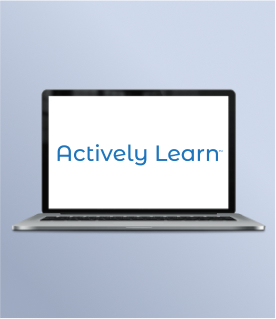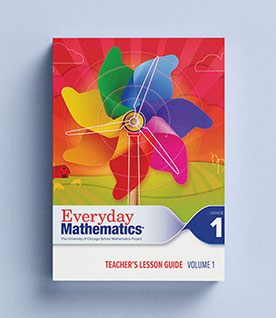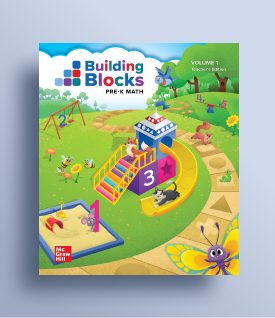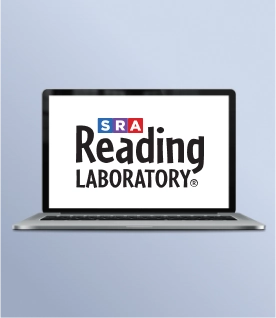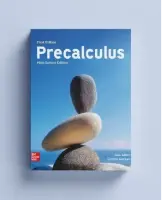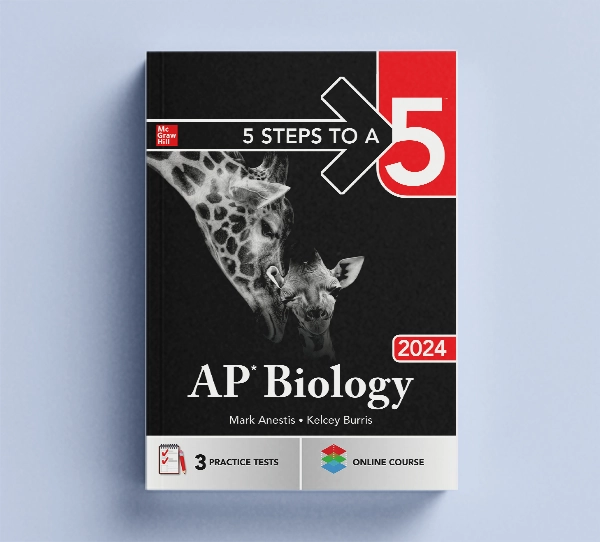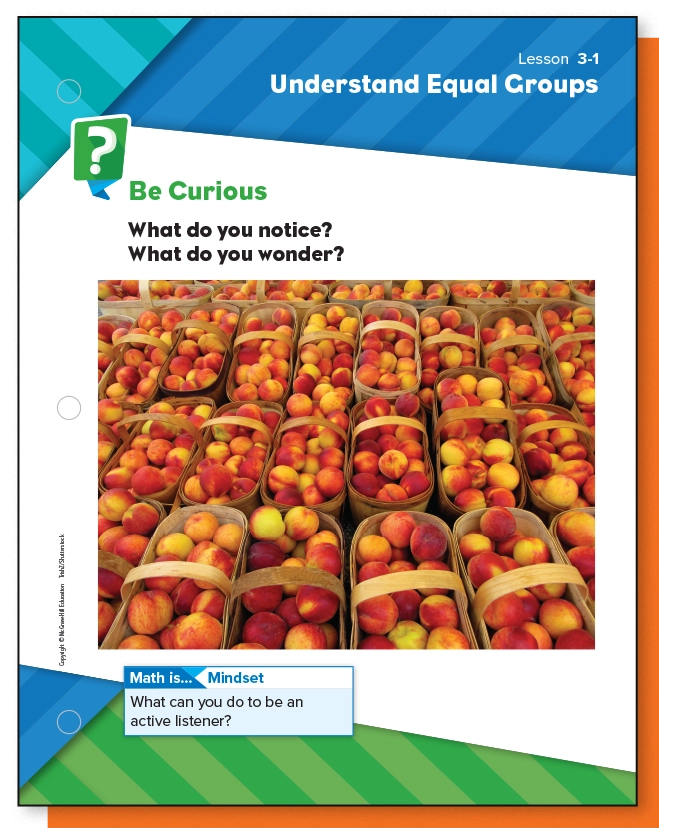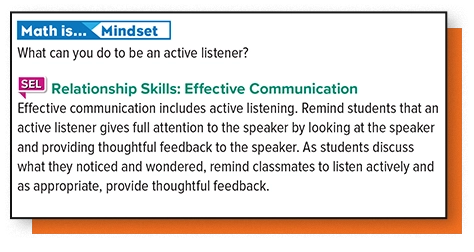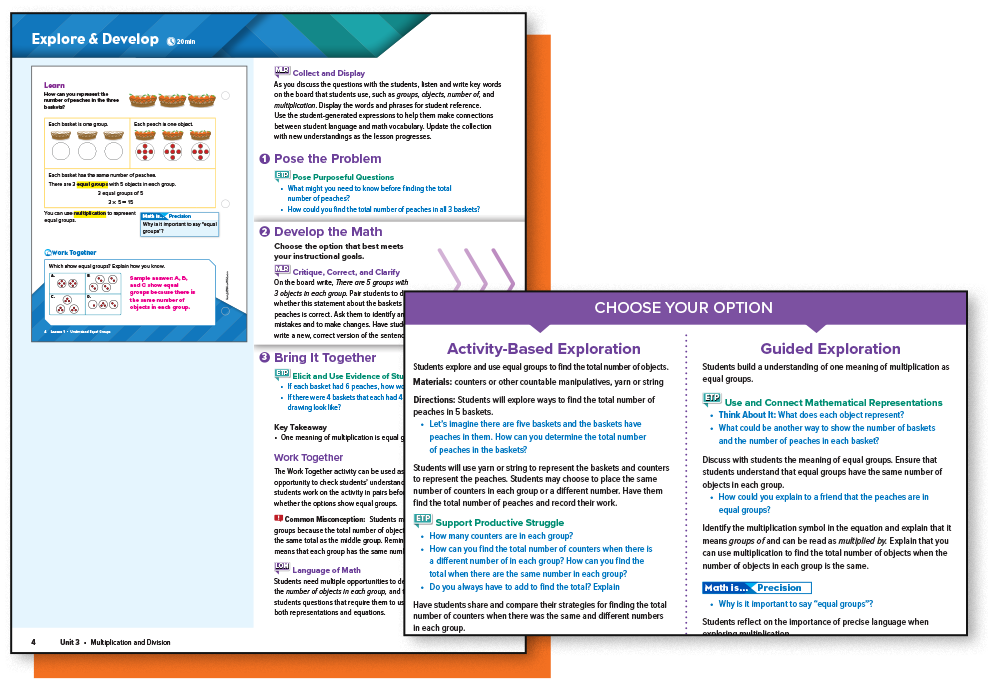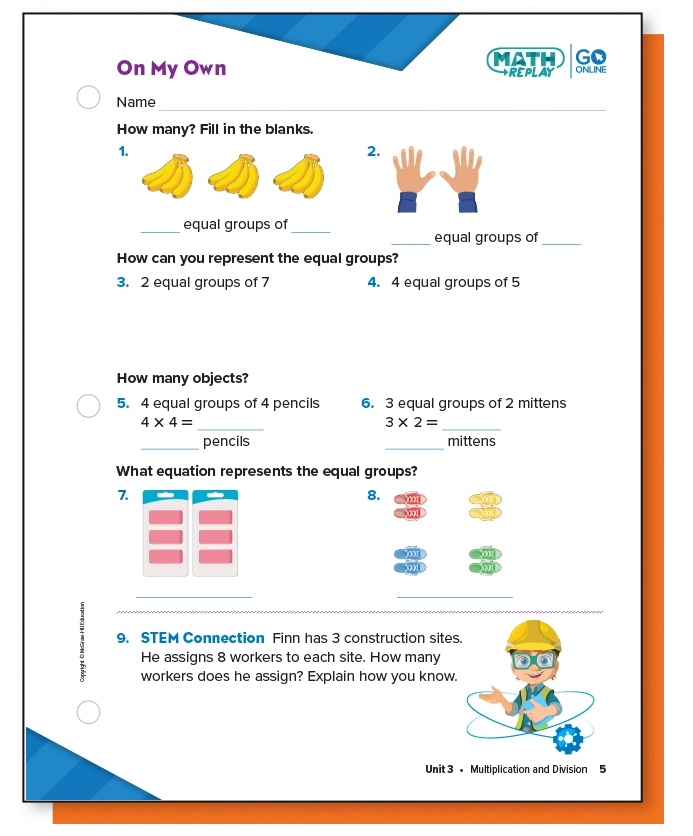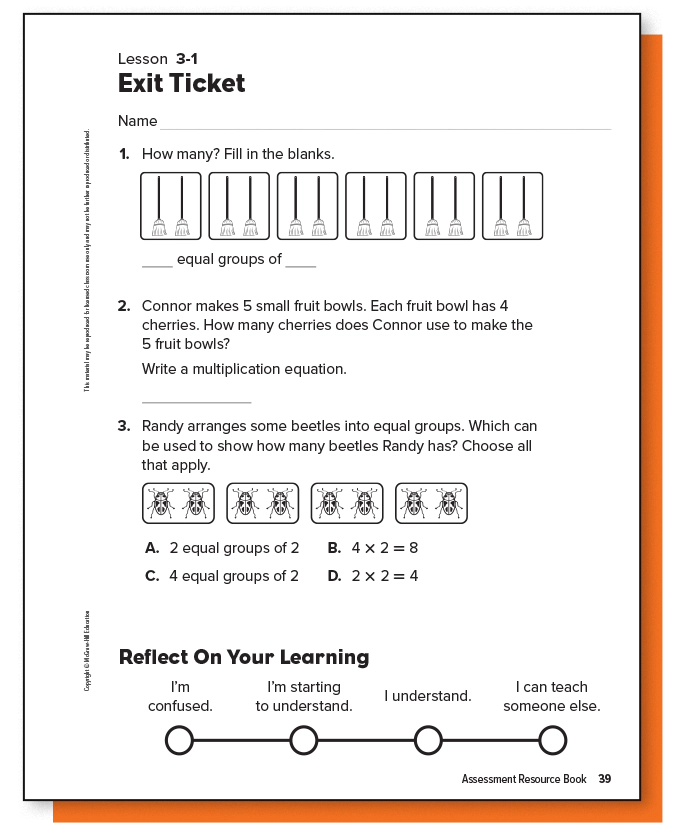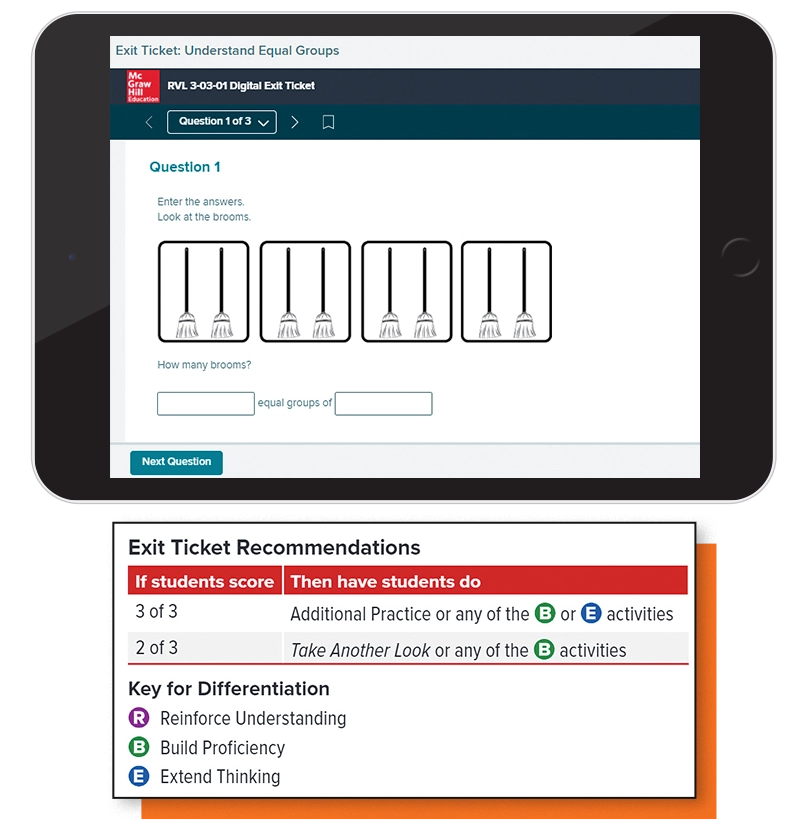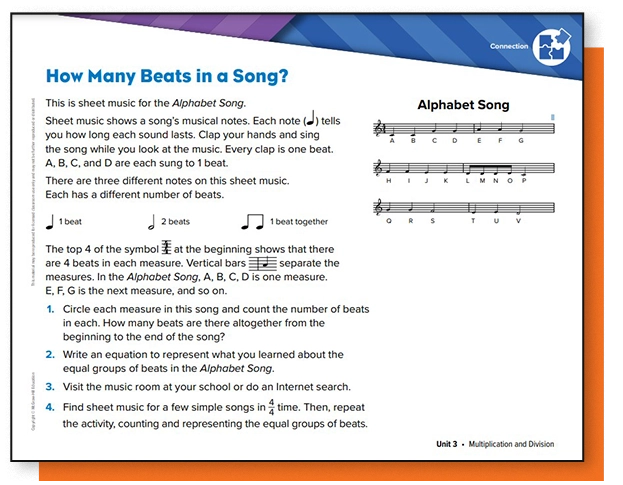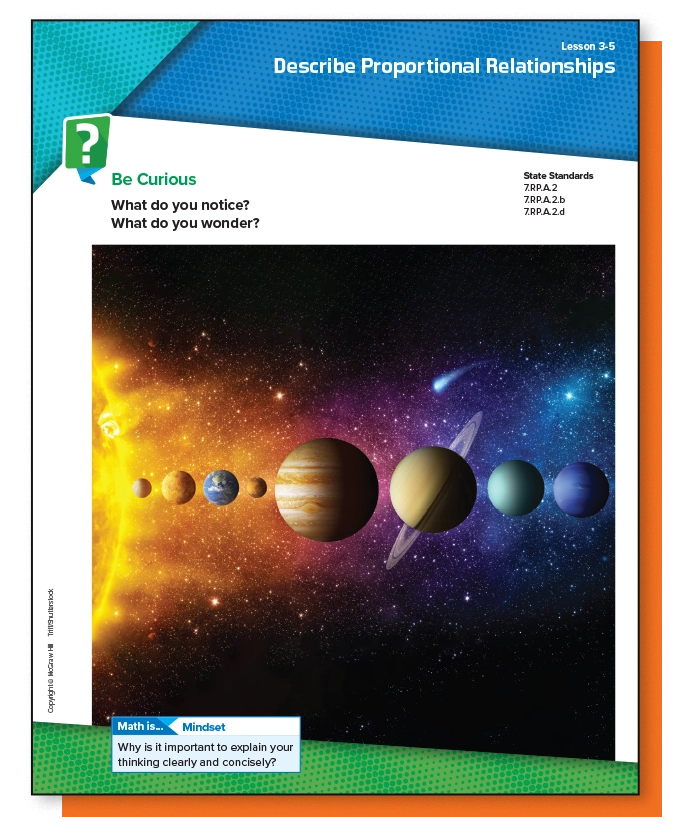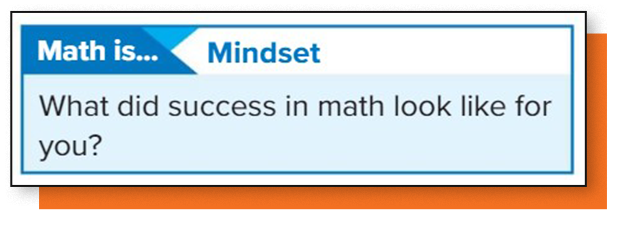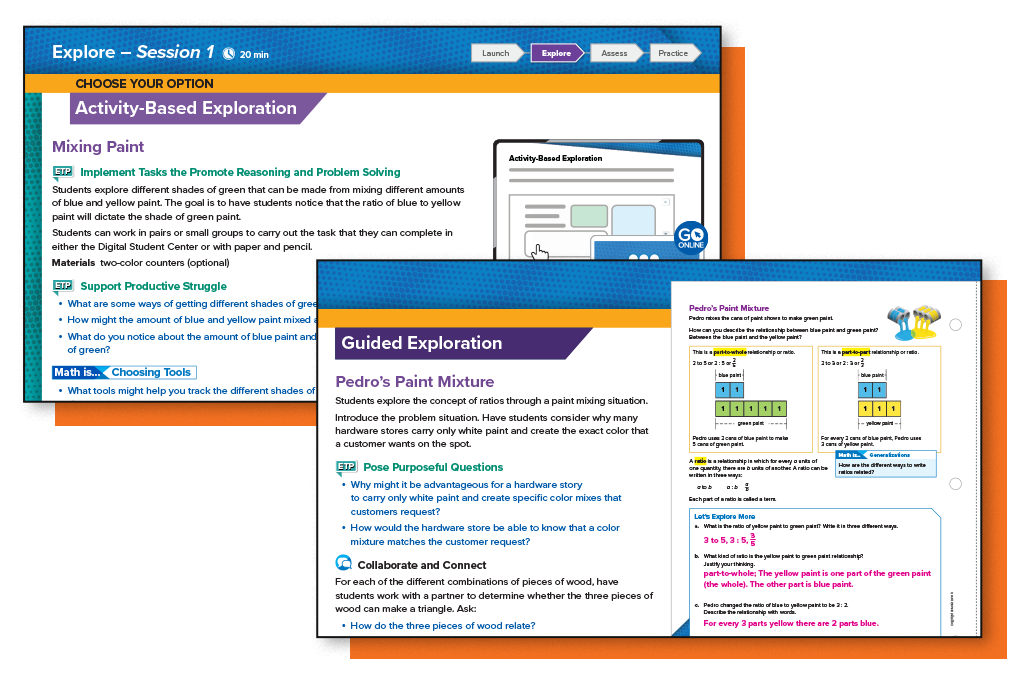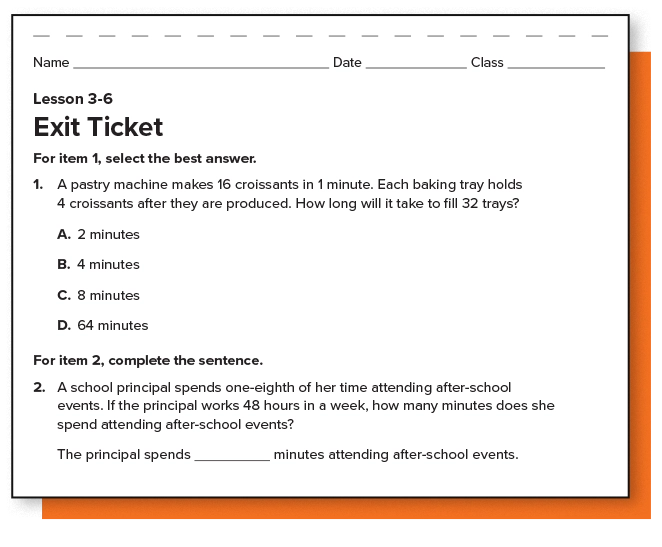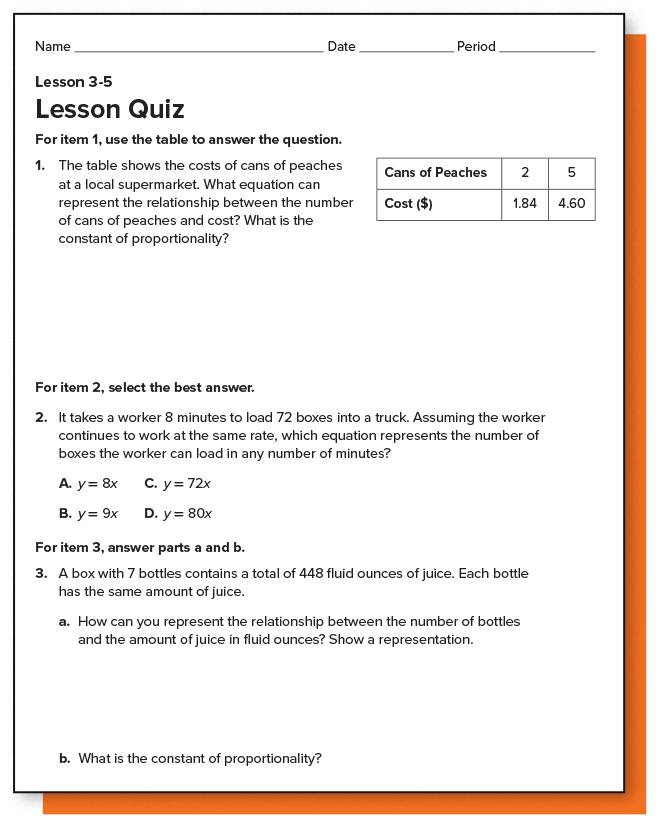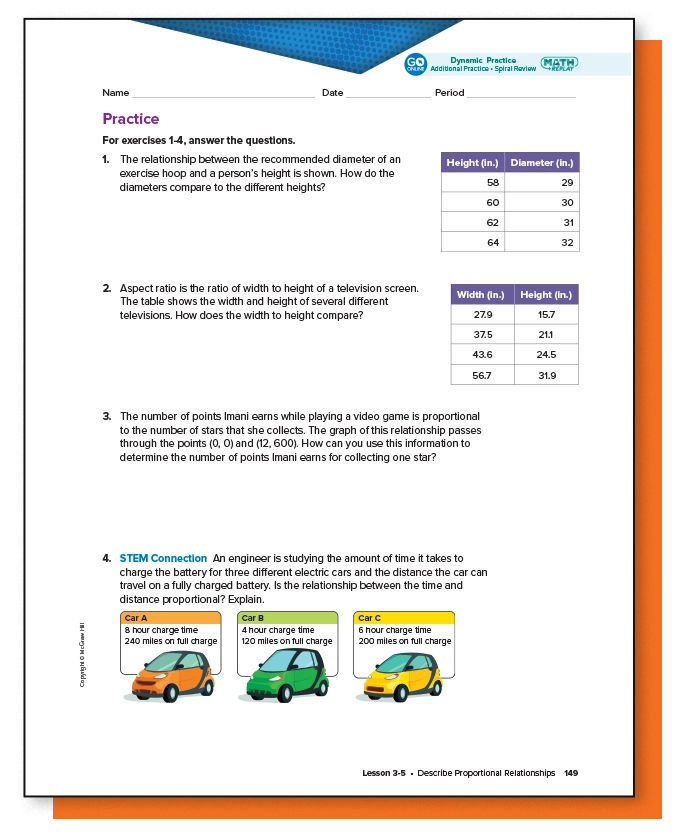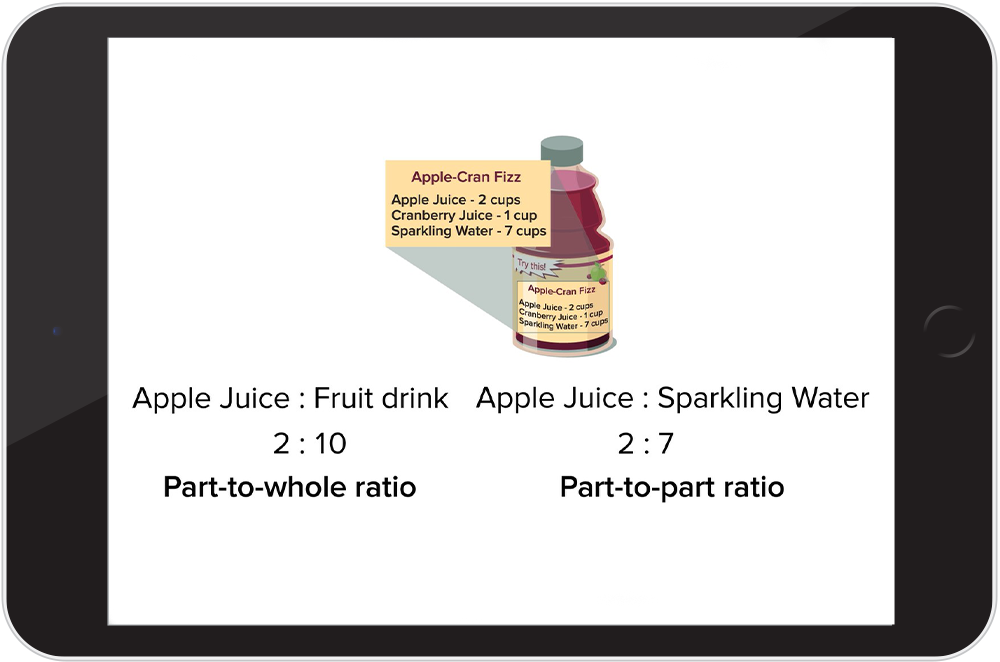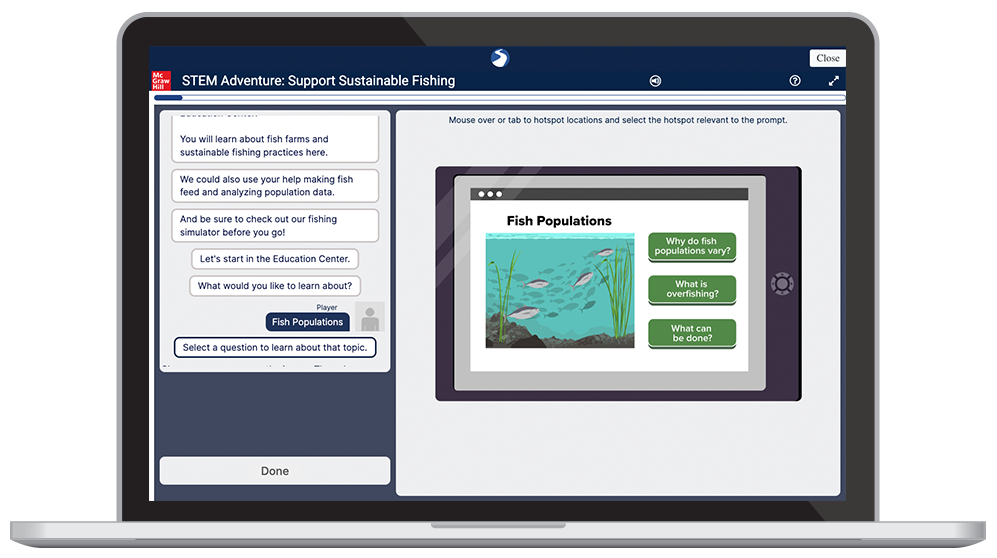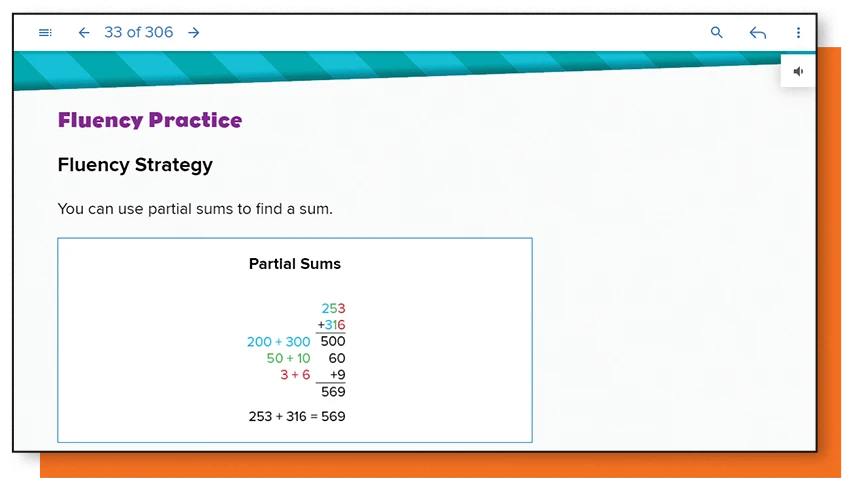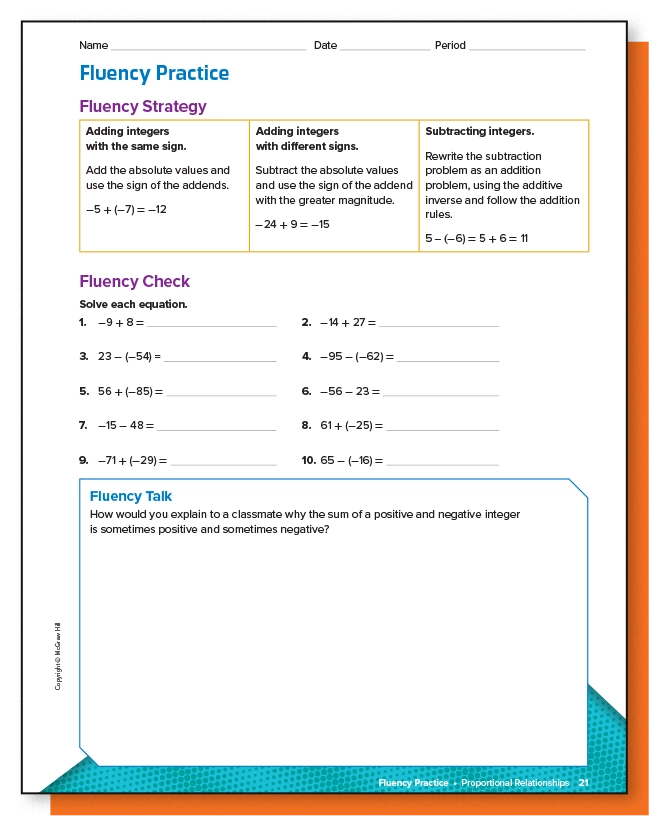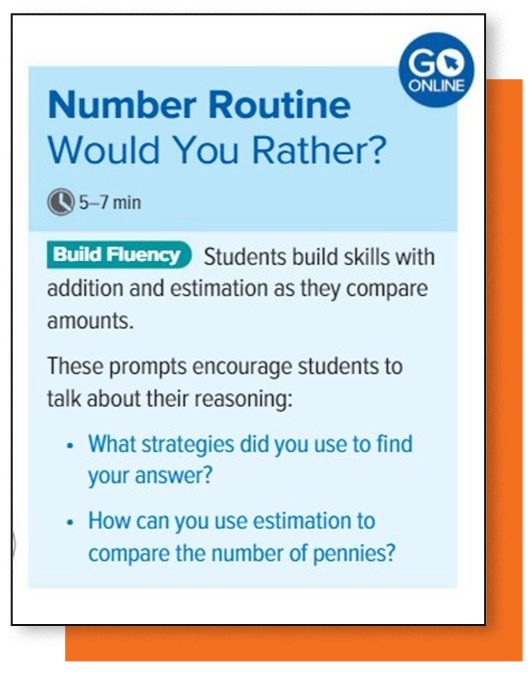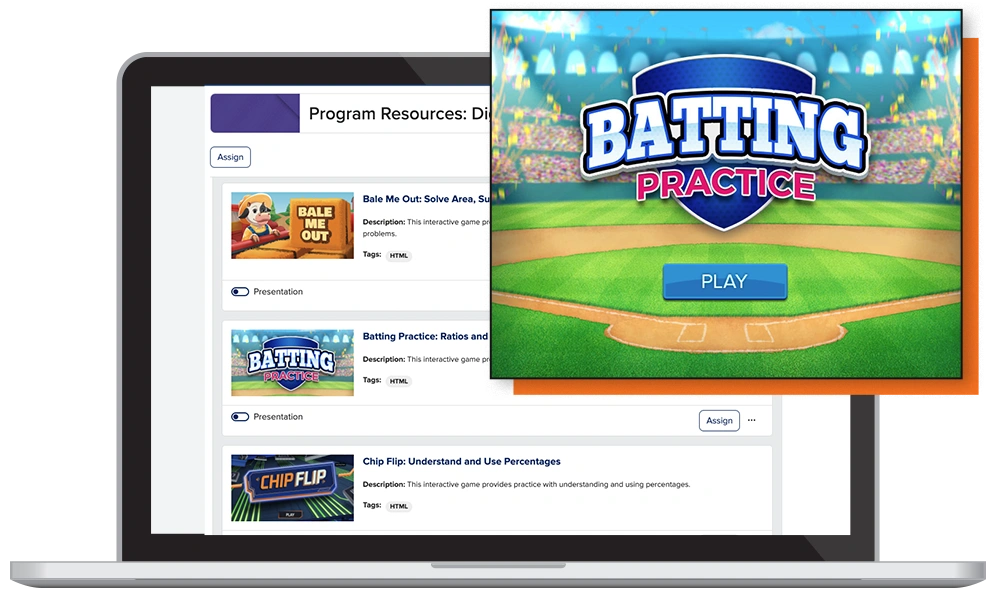My Account Details
Reveal Math K–8
In the Classroom
Flexible Lessons That Further Learning
Explore mathematics through a flexible five-part lesson design, complete with teacher’s choice between two instructional options to help serve all types of learners in your classroom. This routine-based approach helps streamline daily instruction around fluency, sense-making, and math language for a more structured, productive classroom environment.
K–5 Lesson Model
6–8 Lesson Model
Go Beyond Rote Memorization
Build Mathematical Fluency
Fluency is more than memorization; it’s about having a deep-rooted understanding and mastery of operations, relationships, and concepts. Reveal Math structures daily fluency activities around practice, routines, spiral review, and game-based learning—engaging students in the lesson content and developing their application of strategy to solve unknown problems.
Support Language Acquisition
Mathematics is not just a series of operations, but a complex language of its own. To help develop and promote the use of math language skills, Reveal Math incorporates a variety of supports throughout each unit and lesson:
Math Language Development mini-lessons in every unit offer designated language support for English Learners and can be taught at any time during the unit.
Multilingual Learner Scaffolds based on WIDA levels (Emerging, Expanding, and Bridging) provide instructional support in English language development as well as differentiated support in math in every lesson.
Language Objectives in each lesson identify a linguistic focus for all learners.
Language of Math promotes the development of key vocabulary terms to support contextual applications.
Developed by the Stanford Center for Assessment, Learning, and Equity, Math Language Routines in every lesson promote all students’ language development in mathematical sense making.
Math Language Development mini-lessons in every unit offer designated language support for English learners and can be taught at any time during the unit.
Multilingual Learner Scaffolds based on WIDA levels (Emerging, Expanding, and Bridging) provide instructional support in English language development as well as differentiated support in math in every lesson.
Language Objectives in each lesson identify a linguistic focus for all learners.
Language of Math promotes the development of key vocabulary terms to support contextual applications.
Developed by the Stanford Center for Assessment, Learning, and Equity, Math Language Routines in every lesson promote all students’ language development in mathematical sense-making.
Assess and Address Needs
Reveal Math offers a comprehensive set of diagnostic, formative, and summative assessment tools—all available in both print and digital formats. With this data, teachers can generate actionable performance reports (Class Activity Reports and Standards Reports) in the Digital Teacher Center to help them make data-driven instructional decisions.
Type: Diagnostic
ASSESSMENT
Course Diagnostic
HOW OFTEN
Beginning of the school year
DESCRIPTION
Diagnoses students’ strengths and weaknesses with prerequisite concepts and skills for the upcoming year
ASSESSMENT
Unit Diagnostic
HOW OFTEN
Beginning of each unit
DESCRIPTION
Diagnoses students’ strengths and weaknesses with prerequisite concepts and skills for the upcoming unit
|
ASSESSMENT |
HOW OFTEN |
DESCRIPTION |
|---|---|---|
|
Course Diagnostic |
Beginning of the school year |
Diagnoses students’ strengths and weaknesses with prerequisite concepts and skills for the upcoming year |
|
Unit Diagnostic |
Beginning of each unit |
Diagnoses students’ strengths and weaknesses with prerequisite concepts and skills for the upcoming unit |
Type: Formative
ASSESSMENT
Work Together*
only applies to K–5
HOW OFTEN
During a lesson
DESCRIPTION
Assesses students’ understanding of the concepts and skills presented in Learn
ASSESSMENT
Exit Ticket
HOW OFTEN
End of each lesson
DESCRIPTION
Assesses students’ conceptual understanding and procedural fluency with lesson concepts and skills
ASSESSMENT
Lesson Quiz*
only applies to 6–8
HOW OFTEN
After a lesson
DESCRIPTION
Assesses student conceptual understanding with lesson concepts and skills.
ASSESSMENT
Math Probe
HOW OFTEN
During a unit
DESCRIPTION
Identifies common misconceptions
|
ASSESSMENT |
HOW OFTEN |
DESCRIPTION |
|---|---|---|
|
Work Together* |
During a lesson |
Assesses students’ understanding of the concepts and skills presented in Learn |
|
Exit Ticket |
End of each lesson |
Assesses students’ conceptual understanding and procedural fluency with lesson concepts and skills |
|
Lesson Quiz* |
After a lesson |
Assesses student conceptual understanding with lesson concepts and skills. |
|
Math Probe |
During a unit |
Identifies common misconceptions |
Type: Summative
ASSESSMENT
Unit Assessment, Forms A and B
HOW OFTEN
End of each unit
DESCRIPTION
Evaluates students’ understanding of and fluency with unit concepts and skills
ASSESSMENT
Unit Performance Task
HOW OFTEN
End of each unit
DESCRIPTION
Evaluates students’ ability to apply concepts and skills learned
ASSESSMENT
Benchmark Assessments
HOW OFTEN
After multiple units
DESCRIPTION
Evaluates students’ understanding of concepts and skills taught in multiple units
ASSESSMENT
Summative Assessment
HOW OFTEN
End of the school year
DESCRIPTION
Evaluates students’ proficiency with concepts and skills taught over the school year
|
ASSESSMENT |
HOW OFTEN |
DESCRIPTION |
|---|---|---|
|
Unit Assessment, Forms A and B |
End of each unit |
Evaluates students’ understanding of and fluency with unit concepts and skills |
|
Unit Performance Task |
End of each unit |
Evaluates students’ ability to apply concepts and skills learned |
|
Benchmark Assessments |
After multiple units |
Evaluates students’ understanding of concepts and skills taught in multiple units |
|
Summative Assessment |
End of the school year |
Evaluates students’ proficiency with concepts and skills taught over the school year |
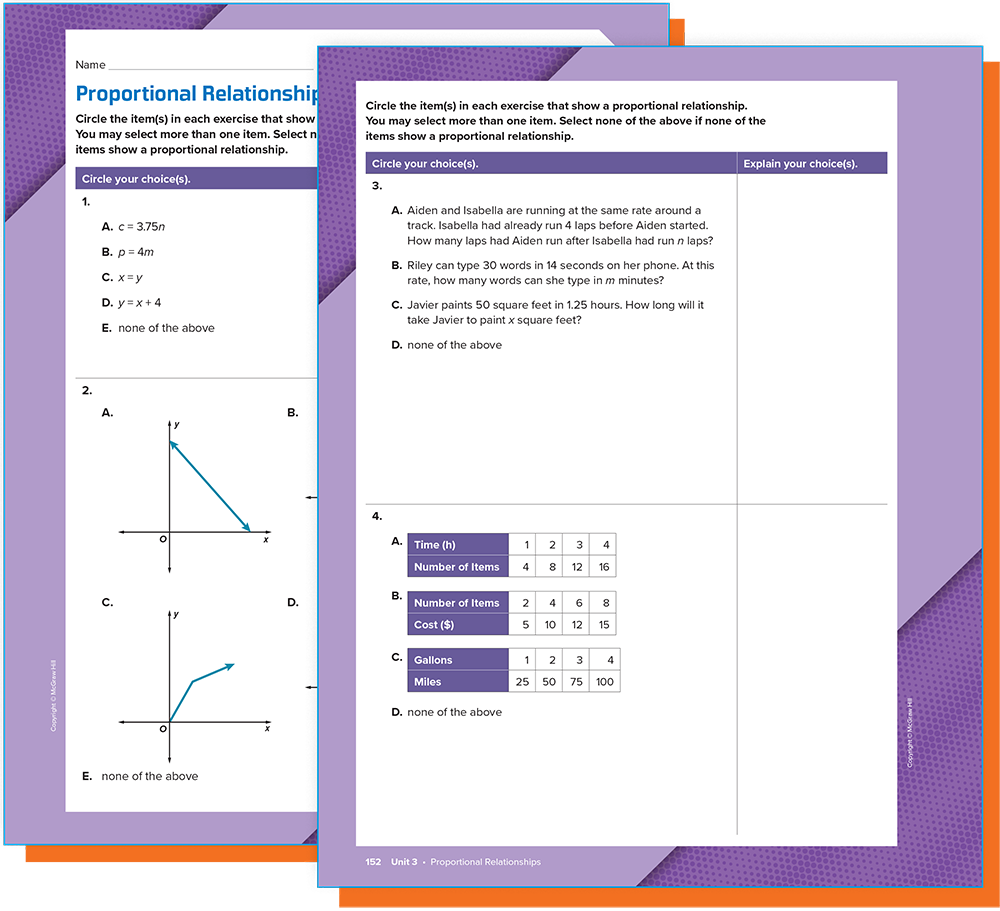
Identify and Rectify Misconceptions
Uncover students’ misconceptions with Math Probes, located at point-of-use to help teachers make informed instructional choices targeting specific math concepts. Each probe begins by assessing students’ understanding of concepts and then asks them to share their thinking. Once misconceptions are identified, teachers can correct them quickly and efficiently with provided remedies.
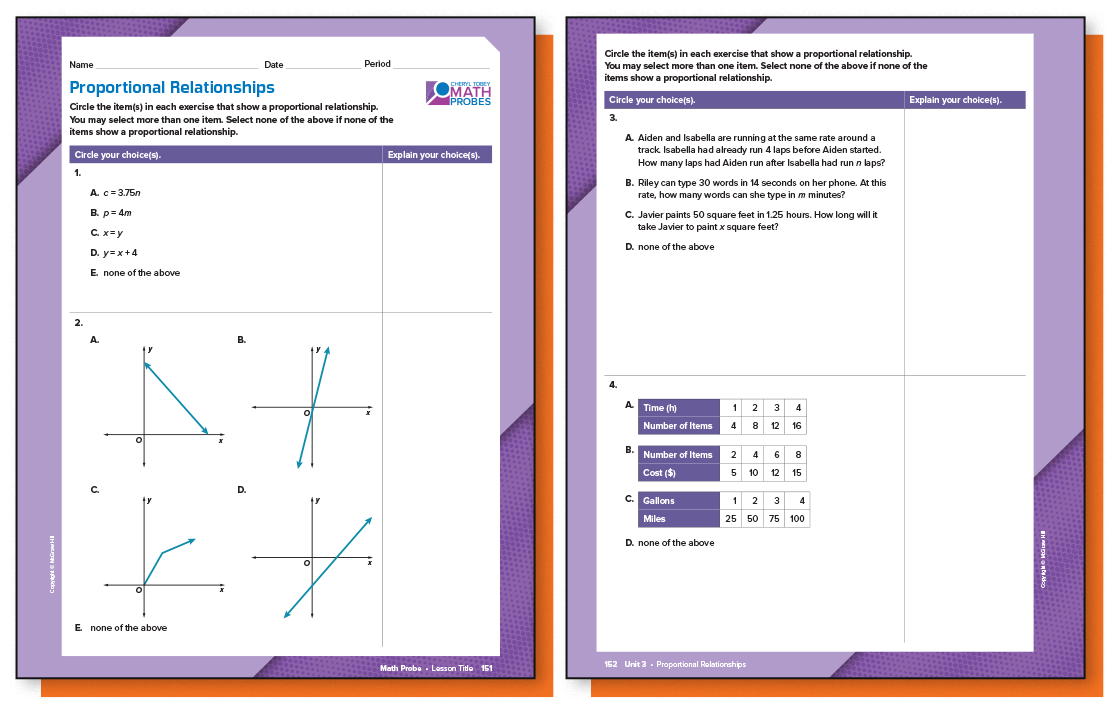
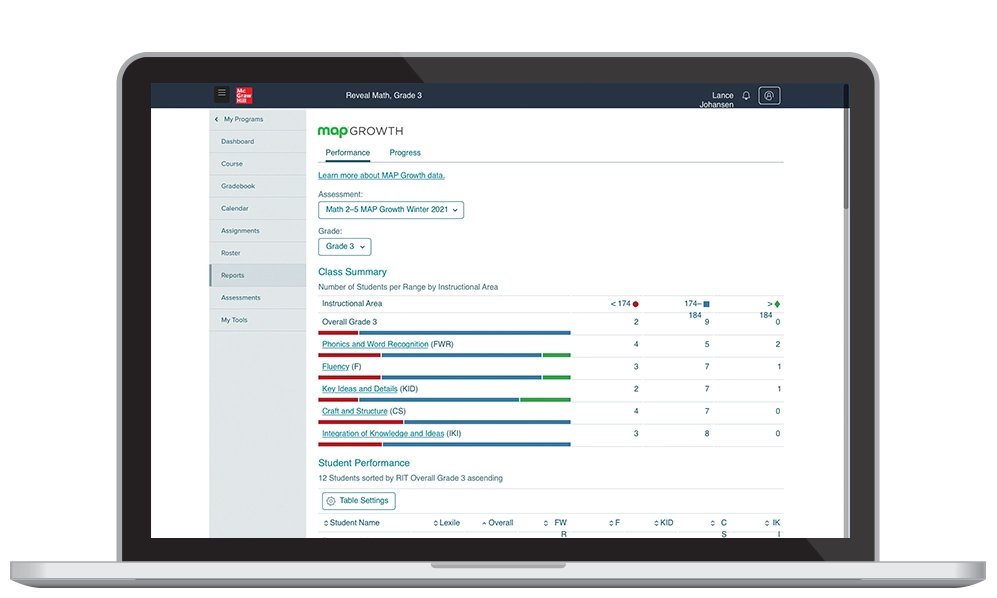
Measure Knowledge With MAP Growth™
MAP Growth is the market’s most trusted and accurate interim assessment that measures what students know and what they’re ready to learn next. Reveal Math teachers can access powerful MAP Growth data to review unique reports, identify students lacking prerequisite knowledge, and intervene using Targeted Skills Paths to fill knowledge gaps.
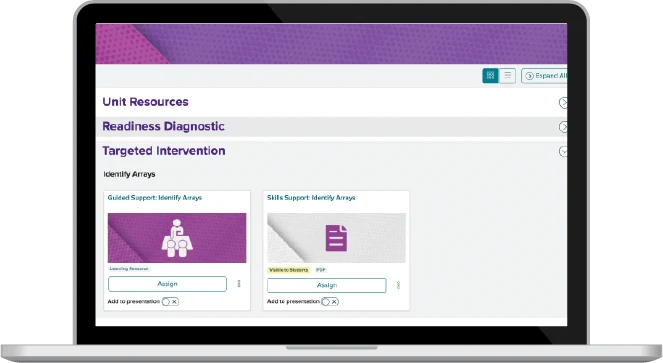
Close Skills Gaps With Targeted Intervention
Intervention resources align with each problem within every Unit Assessment and Readiness Diagnostic—a digital intervention tool that assesses and aligns to the prerequisite skills needed to understand the upcoming unit—making it easy to correct misunderstandings and target knowledge gaps.

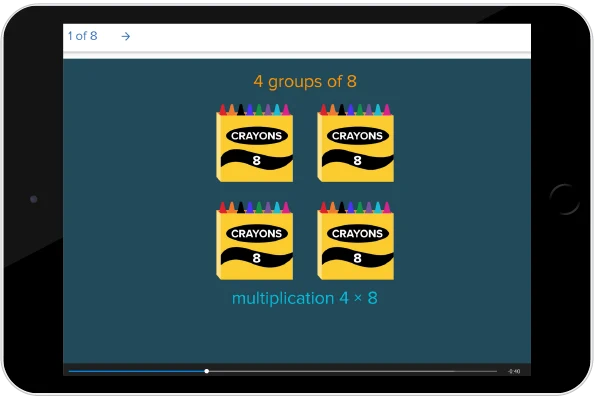
Take Another Look digital mini-lessons provide quick, actionable data to help inform instruction while supporting each student with a three-part, gradual-release activity:
- Modeling
- Interactive Practice
- Lesson Check
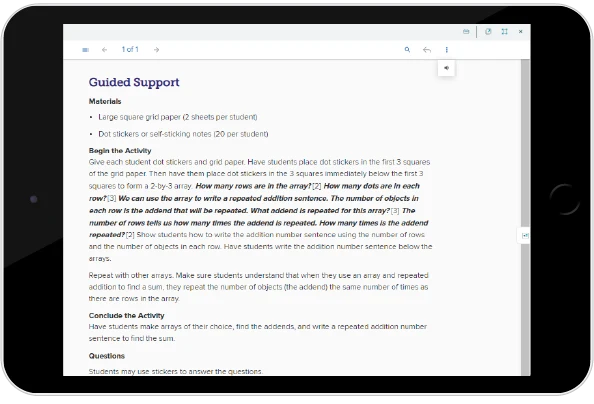
Guided Support provides a teacher-facilitated, small group mini-lesson that uses concrete modeling and discussion to build conceptual understanding.
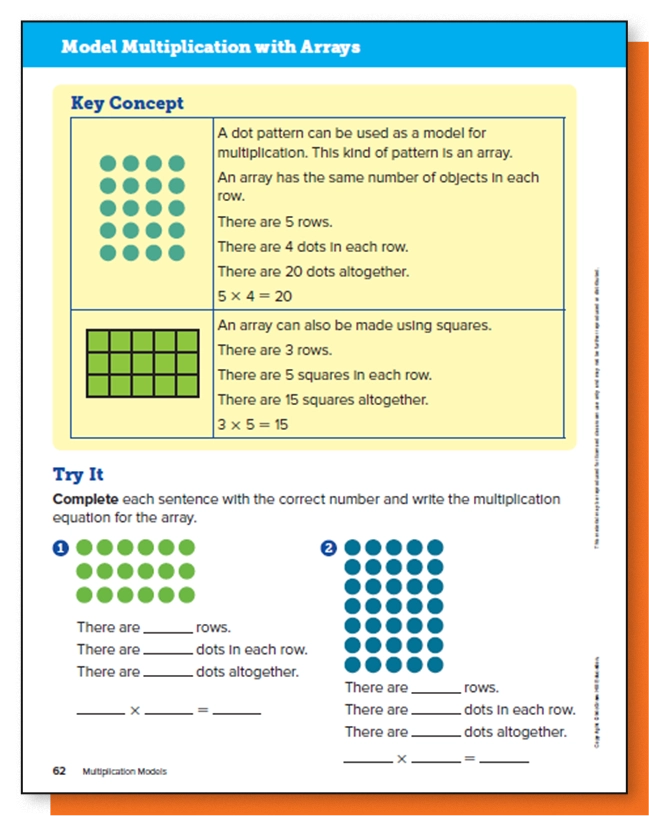
Skills Support Sheets are skill-based practice sheets that provide targeted practice of previously taught items.




